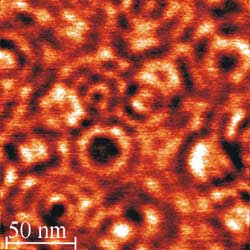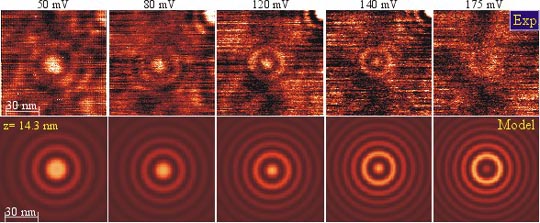Scattering States of Ionized Dopants

At low temperature the resistivity of semiconductors is determined by the scattering of the electron waves at ionized dopants. Although the dopant potential is usually attractive, the potential inhomogenity leads to a reflection of the electrons leading to the so called scattering states. Scanning tunneling spectroscopy is able to image such scattering states (Fig. 1). Thereby the applied voltage corresponds to the electron energy. Imaging scattering states at different voltages thus gives direct access to the dispersion relation of the semiconductor (Fig. 2). More importantly a detailed analysis of the scattering states of an individual dopant allows to determine its depth below the surface and its scattering coefficient as a function of energy.

The first is an extremely helpful tool, since it gives the coordinates of all dopants in a certain sample range allowing to determine the shape of the potential landscape in that area on the nm scale. So electronic properties of a particular area can be directly compared with the potential.
